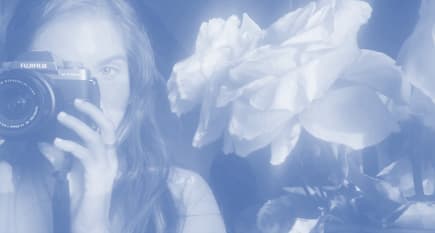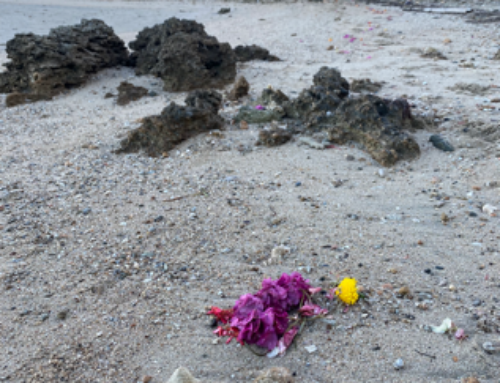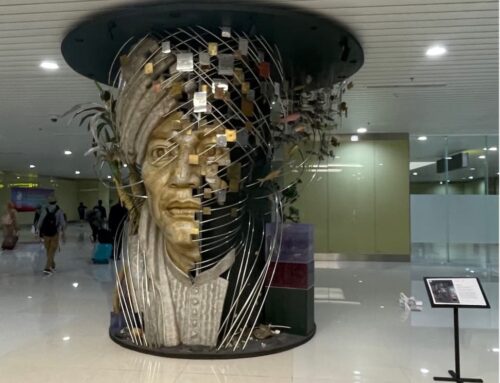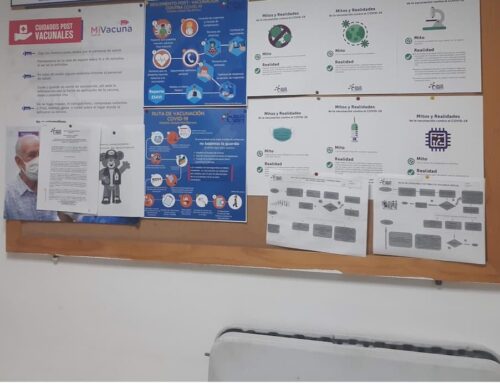
Selfie before setting up my desk for an online interview. Photo by author.
This photo is not just a selfie. This photo is part of an autoethnographic study that investigates the reflexive methodologies I employed during my fieldwork research. By studying myself through photography, I critically re-evaluated my cultural identity, self-perception, and experiences. It also helped me to better understand the life-altering adaption process and myriad changes that took place in my life and research due to the COVID-19 pandemic, which caused me to pivot from onsite, in-person fieldwork into the field of digital ethnography. The photo above is the first of a series of selfies I took in 2020, as I was beginning my digital research project. Through this process, I gained a better understanding of the “digital self” I had constructed online, whilst revealing my relationship with my own self-perception and the perception of potential interlocutors. Moreover, digital photography, specifically selfies, offers an intriguing case study to illustrate some of the benefits and potential applications of digital ethnography (Cruz, 2017).
Photography has always been a big part of my life. I grew up in a family that loved taking photos. Photos served as a form of storytelling in and about our lives—proof sheets of who we once were and how much we have changed since then. The selfies I took during my involvement with digital ethnography went beyond this kind of documenting and storytelling, however, by putting me in conversation with my research in a brand new way. One of my favorite American photographers and activists, Nan Goldin, also served as an important inspiration to this work. “My work,” she said in a 2000 interview, “has been about making a record of my life that no one can revise. I photograph myself in times of trouble or change in order to find the ground to stand on in the change. Taking self-portraits becomes a way of hanging on to yourself.” In my case, photos produced illustrative support and a way to both apprehend the complex reality I faced during my research and restore the details of moments that might otherwise be forgotten. Thus, the photo above was just the beginning.
I started taking selfies in late April 2020, in part because I wanted to show that I could still visually document my fieldwork experience, even while conducting digital ethnography. Alongside the ordinary notebook I used to record my fieldnotes, self-portraits became a source of inspiration and curiosity that allowed me to visually capture all the salient moments I spent sitting in my apartment in Amsterdam in front of my laptop. Through my camera, I endeavored to record my feelings and emotions, and hopefully lose the fear of the unknown future of my research project. I transformed my home into a space where I could create an art installation—a symbolic space that could represent my field site. My digital limbs, such as my laptop, phone, and iPad, were also my artifacts—the handy tools I used for my research. While setting up the scene, I concealed the dynamic of this new experience and wanted to record it through my camera lenses.
The scene remained like this for a couple of months. A big wooden desk with all my digital equipment piled on top, my camera on a tripod, and fresh flowers from my neighborhood florist. In that way, I created a scene into which I could welcome my interlocutors for an interview and also position myself within my fieldwork. At the end of each interview, I took a selfie, and this quickly became a habit. Soon, these photos invited me to ask different sets of questions—questions which were not so much about the technological implication of digital devices on my research, but instead about how I was presenting myself online and what kinds of information I wanted to share about myself. Through selfies, I was able to document a series of assemblages (practices, forms and methods of documentation, materials, etc.) that could be useful for understanding the nuances of my online positionality and persona.
Indeed, photography helped me to better understand how I was presenting myself online. In my mind, I illustrated a triangle between myself, photography, and reality. The significant power of photography in depicting the reality or “that-has-been” (Barthes, 1981, 77) can underline the functions of photography. Barthes writes the following:
The photograph is an emanation of the referent. From a real body, which was there, proceed radiations which ultimately touch me, who I am here; the transmission duration is insignificant; the photograph of the missing being, as Sontag says, will touch me like the delayed rays of a star. A sort of umbilical cord links the body of the photographed thing to my gaze: light, though impalpable, is here a carnal medium, a skin I share with anyone who has been photographed (80-81).
This poetic representation of photography also highlights my complicated, embodied connection with visual representation.
Meanwhile, as anthropologist Maggie Cummings suggests, selfies can be a valuable tool for experiential learning. Cummings introduced a “selfie assignment” in her class, prompting students to take selfies to explore self-representation on social media. This approach hits a technological “sweet spot,” as it incorporates technology into the classroom while transforming it into a subject of study and cultural analysis rather than merely a utilitarian tool (2015).
I am aware that my photographs and stories stand both as an autoethnographic writing piece and as photographic documentation of my research. I believe those selfies will be interpreted as having a certain degree of realism. This assumes that at least some of what is depicted is accurate to reality, showing my face and my emotions through a click of the lens, and that this was how I existed in the physical world at those moments. However, I assert that a part of reality can be viewed and interpreted through photography. I wish to ask my interlocutors to believe in my sincere intentions in describing my experiences precisely as I experienced them. Finally, it is up to each reader to decide how to interpret the information presented, either blank, with colors or just in blue, like in the photo above.
References
Barthes, Roland. 1981. Camera Lucida: Reflections on Photography. 1st American ed. New York: Hill and Wang.
Cruz, Edgar Gómez. 2017. “The (Be)coming of Selfies: Revisiting an Onlife Ethnography on Digital Photography Practices”. In The Routledge Companion to Digital Ethnography, ed. Larissa Hjorth, Heather Horst, Anne Galloway, and Genevieve Bell. Routledge: New York and London
Cumming, Maggie. 2015. “Thinking about and with “Selfies” in Classroom”. Published June 29, 2015 https://www.utpteachingculture.com/thinking-about-and-with-selfies-in-the-classroom/
Christina Kefala is a PhD candidate in Anthropology at the University of Amsterdam. She is a digital ethnographer whose research focuses on Foreign Entrepreneurs, Businesses, and Brands in China: whiteness, gender, digitization, consumerism, and Artificial Intelligence.
Cite as: Kefala, Christina. 2024. “Visual Me?”. In “Photographic Returns,” edited by Christina Kefala and Ipsita Day, American Ethnologist website, 23 June. [https://americanethnologist.org/online-content/collections/photographic-returns/visual-me-by-christina-kefala/]
This piece was edited by American Ethnological Society Digital Content Editor Katie Kilroy-Marac (katie.kilroy.marac@utoronto.ca).




